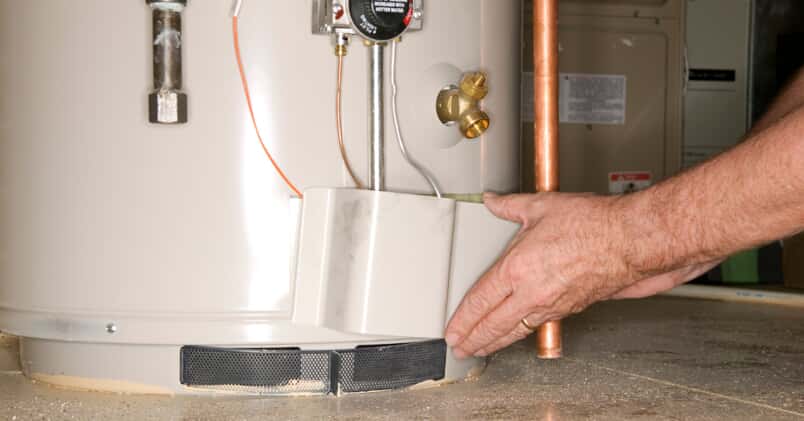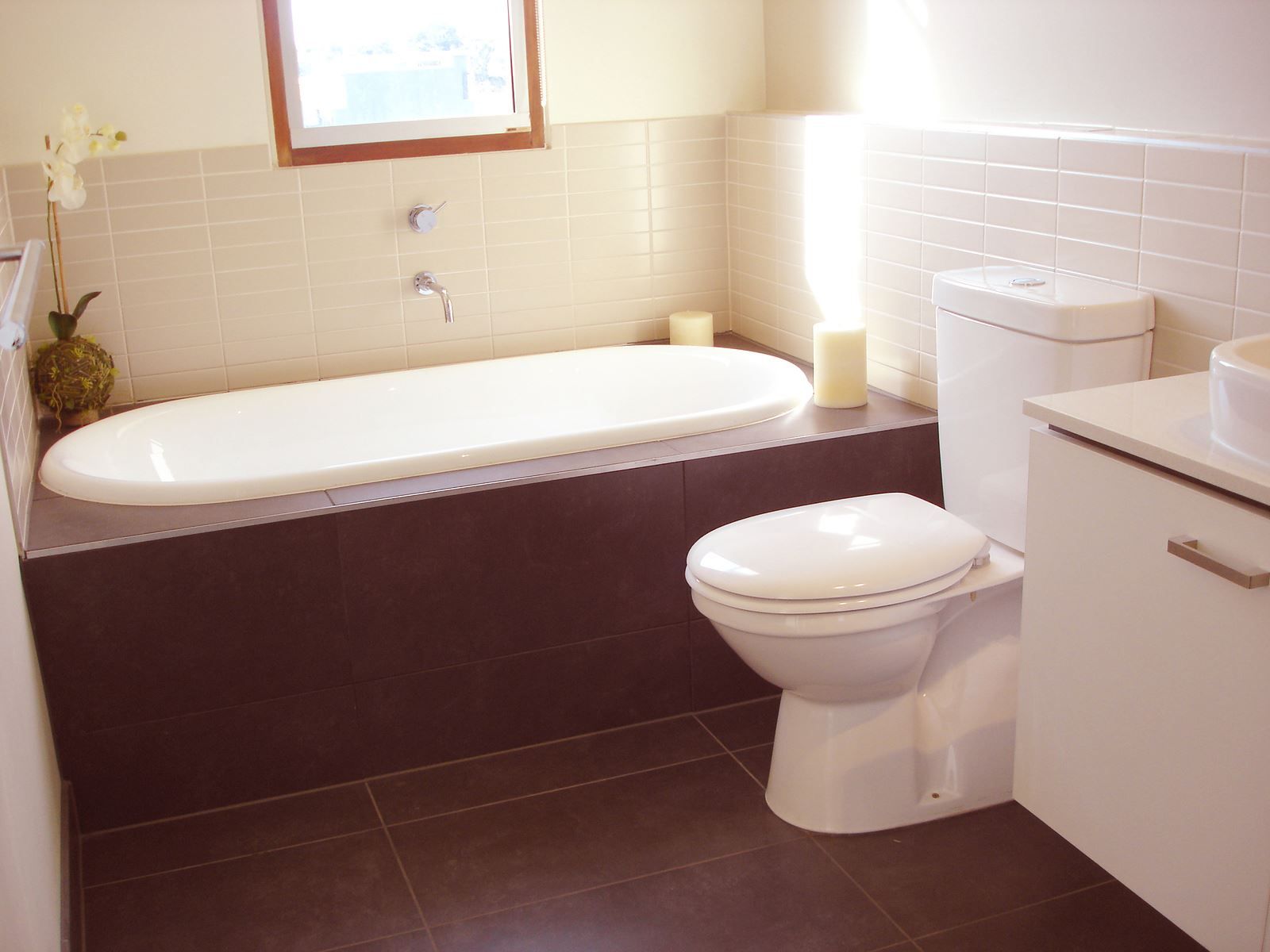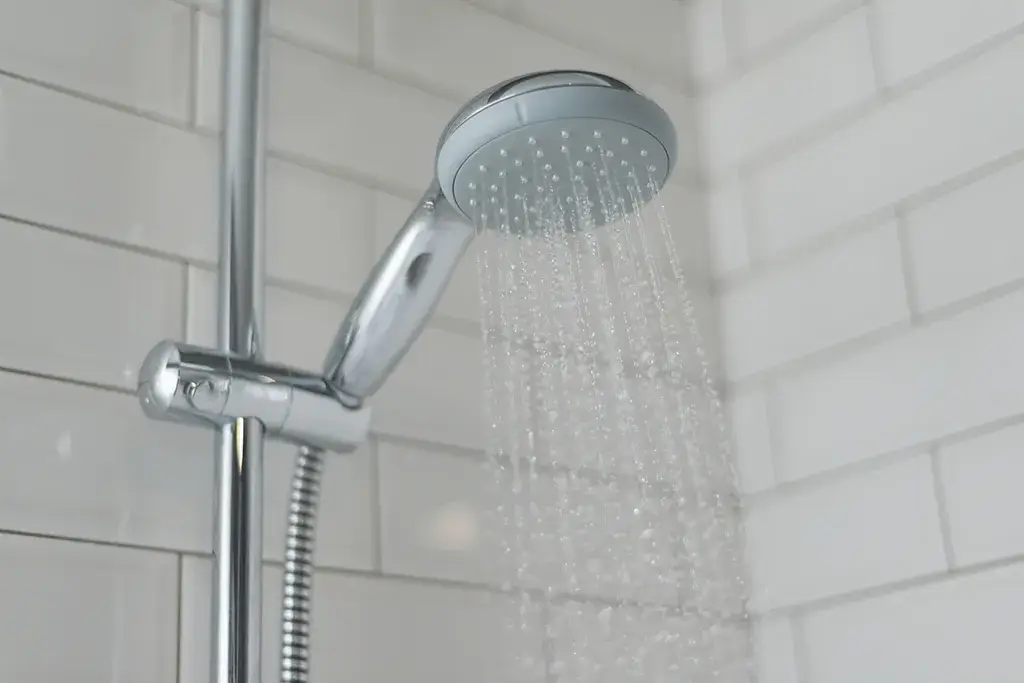Nobody wants to deal with the stress and potential damage of a leaking water heater. But the reality is, at some point, most homeowners will have to face this common problem. The key is being prepared and acting fast when you first notice signs of moisture.
That minor drip or dampness around the base of your water heater may not seem like a big deal at first glance. However, letting even a small leak go unfixed is a surefire way to land yourself in hot water down the road – literally. What starts as a little puddle can rapidly escalate into a major flood if the leak source isn’t properly identified and repaired in time.
This guide will walk you through the proper procedures for handling a water heater leak from the moment that telltale puddle is discovered. You’ll learn the critical first steps for containing the leak and preventing further damage to your home. We’ll show you techniques for diagnosing the leak’s origin, whether it’s coming from the tank itself, pipes, valves, or connections.
From there, you’ll get advice on when a full water heater replacement makes more economic sense versus repairing the leak. Safety precautions for working around water heaters are also covered. And we’ll cap things off with maintenance tips for avoiding chronic leaking issues long-term.
Don’t let a leaking water heater turn a manageable situation into a major headache. With some basic knowledge and fast action, you can get ahead of most leaks before they get ahead of you.

Initial Steps to Take When You Discover a Leak
As soon as you spot that telltale puddle or drip around your water heater, don’t just ignore it and hope for the best. A sluggish reaction could easily allow a minor leak to rapidly escalate into a major flood. Time to go into emergency action mode:
Turn Off the Heat Source
First things first – stop feeding any more heat to that leaking tank. For gas water heaters, turn the gas control valve to the “pilot” setting to shut down the burners. If it’s an electric model, kill the power by flipping off the dedicated breaker.
Shut Down the Water Supply
Next, cut off the water line that’s piping in and replenishing the tank. Look for the supply valve on the cold inlet pipe leading into the water heater and turn it to the closed/off position. This will keep any more water from entering the leaky tank.
Drain That Tank
With the water supply shut off, you can work on draining out the existing reservoir through the drain valve at the bottom of the tank. Attach a standard garden hose and route it to a floor drain, utility sink, or discharge it outside. Open up that drain valve and let ‘er rip!
Mop Up Any Active Dripping
While the tank is emptying, use towels, buckets, pans – whatever you can grab – to try and contain any active spraying or overflow coming from the apparent leak point. This damage control can help prevent minor drips from becoming a deluge across your home.
Check Surroundings for Additional Leaks
Speaking of containing the situation, take a quick look around at other connected plumbing like discharge pipes from the temp/pressure relief valve. Make sure there aren’t multiple leak sources conspiring to soak your home at the same time.
Start the Drying Process
Whether it’s already a major watery mess or you caught things early, use air movers, fans, dehumidifiers – anything to start removing moisture ASAP. Getting ahead of potential mold and wider damage is key.
Document Everything
Finally, take photos or video detailing the location of the leak, any water stains or damage, and the current condition of the water heater unit. Having this evidence on record can help with insurance claims or handling contractors down the road.
By quickly knocking out these action items after discovering a leak, you contain the situation from getting worse while prepping to find the actual leak source. From there, you can start exploring repair or replacement options – but more on that later!
Identifying the Source of the Leak: Tank, Pipes, or Connections
Okay, you’ve taken the initial emergency actions to shut down the leaking water heater and start drying things out. Next up is actually pinpointing where all that water is coming from. There are a few common sources that are typically to blame:
The Tank Itself
Let’s start with the biggest offender – the tank core holding that hot water reserve could be springing a leak. This usually happens due to gradual corrosion and rusting eating away at the tank’s steel lining from the inside out over many years of use and exposure to chemically-treated water supplies.
As that internal rusting spreads, it creates micro-cracks and fissures that allow water to slowly seep or gush out. You’ll often see those telltale rusty deposits and water streaking on the exterior of the tank itself if this is the issue.
Leaking Pipe Connections
Of course, it’s also very common for the leak to originate from one of the pipe connections into or out of the tank, rather than the tank itself. Things like the cold water inlet and hot water outlet pipes both have threaded fittings that can eventually loosen up or degrade, springing leaks.
Same goes for other connected lines like the temperature/pressure relief valve’s discharge pipe. Any place you see pipes, fittings, and valves joined to the tank body are potential leak hazards as joints loosen and seals falter over time.
Ruptured Drain Valve
One often-overlooked source is the drain valve down at the bottom of the tank. These inlet valves allow the tank to be emptied and flushed, but they can crack apart and separate. A ruptured or distorted drain valve might seem minor, but it can really empty a tank out in a hurry.
Condensation “Sweating”
Now before you go assuming the worst, consider that not all moisture buildup is necessarily a killer leak. During cooler weather, condensation can sometimes accumulate and drip off a water tank that’s full of hot water – kind of like getting underside sweat on a warm glass. Exterior tank insulation can reduce this “sweating” effect.
Internal Tank Components
For more thorough leak detection, you may need to actually take apart the tank and check interior components like the dip tube and sacrificial anode rod. A busted dip tube could be misdirecting incoming cold water, or a deteriorated anode rod is no longer protecting against internal rust-out.
So in summary, thoroughly inspect the main tank body, all piping/valve connections, and internal components to get to the bottom of any leak. Knowing the precise source is key before attempting repairs or considering a full tank replacement.
Repair vs Replacement: Assessing the Best Course of Action
Once you’ve diagnosed the source of that pesky leak, it’s decision time – are we talking a relatively straightforward repair job, or is it going to make more sense to simply bite the bullet and replace the entire water heater unit? Here are some key considerations:
The Leak Location Matters
If the leak is coming from one of the pipe/valve connections or components outside of the main tank body itself, you may be in luck. These external pieces like the drain valve, anode rod, temperature/pressure relief valve, etc. are relatively inexpensive to simply swap out for new replacements.
As long as the tank core seems structurally solid and corrosion-free, these quick fix repairs can get you back in business for a very reasonable DIY or pro-serviced job cost.
But Tank Leaks are Problematic
On the flip side, if that leak is sputtering from cracks or rusting holes in the central tank storage core, that’s a much bigger can of worms. Once breached, those steel tanks just don’t patch well long-term. You’re essentially running on borrowed time until the entire unit springs another inevitable leak.
At this point, you have to decide if it’s worth throwing even more money at a temporary tank repair, or cutting your losses to invest in a full tank replacement that should carry you another 8-10 years or more.
Age is a Big Factor
Which brings us to the water heater’s age and existing condition. With most tank models only rated for 8-12 years of expected service life, a leak issue on an older unit approaching or beyond that range could mean its days are simply numbered no matter what.
If the tank is just straight-up old and has been requiring more frequent or costly repair calls, wolf-crying leaks are likely its way of waving the white flag. As painful as it is to fully replace, it’s smarter than flushing money down the drain repeatedly on a time-expired unit.
Efficiency and Capacity Upgrades
Here’s the upside of going the full replacement route – you’ll be able to upgrade your home’s hot water supply both in efficiency and storage capacity. Newer models are better insulated, have lower energy needs, and many qualify for rebates from energy providers.
Investing in a larger tank, or exploring on-demand tankless systems, allows rightsizing the hot water setup for your household’s real usage demands. It’s the ideal opportunity for a clean start and cleaner hot water solution.
At the end of the day, your budget, the tank’s age/condition, and weighing those long-term operating costs against a one-time replacement fee will help determine if repair or replacement is smarter for your leaking water heater scenario.
Safety Precautions for Handling Water Heater Leaks
Dealing with a leaking water heater isn’t just an inconvenience – if you don’t take the proper precautions, it can actually become a pretty hazardous situation. Here are some critical safety tips to keep in mind:
Watch for Electrical Hazards
For electric water heaters, avoid the temptation to just start tinkering around without killing the power first. Those tanks are essentially huge, jacuzzi-tub-sized electrical resistance heaters. Exposing the elements or wiring to water can create a serious electrocution or fire risk if you’re not extremely cautious.
Always shut off the dedicated breaker on electric units before doing any leak investigation or drain-down work. And if the hot water hasn’t been turned off yet, be careful about any active drips potentially mixing with electrical components or standing puddles. Bottom line – think safety first when electricity is involved!
Use Caution Around Gas Pipes
On the flip side, gas-fired water heaters bring their own set of safety concerns. Those metal gas lines snaking over to the burner assembly can build up excessive pressure if the tank is still actively heating. You’ll want to carefully shut off the gas supply valve first.
Safely releasing any built-up gas pressure before disconnecting lines or getting around the burner area is a must to reduce fire and explosion risks. Properly venting gas leaks out of enclosed spaces is also crucial. Don’t let a lazy approach turn a water leak into a gas emergency!
Watch for Slip/Scald Hazards
Whether your tank ruptures in a dramatic Hollywood-esque flood or it’s just a slow drip, be mindful that any standing water around the heater creates some risky slipping hazards. You don’t want to go taking a spill onto a wet floor with that 50-gallon steel tank of hot water towering nearby.
Speaking of that hot water, use extreme caution if the tank has been recently active and needs to be drained. Even after sitting awhile, there could still be dangerously hot water inside that can scald. It’s wise to run a trickle into the drain first until cooler stuff starts coming out.
Have A Plan for Tank Removal
If this repair is looking like a full tank replacement job, DO NOT attempt to solo-wrangle that whole water heater unit out by yourself without the proper equipment. Those tanks can easily weigh half a ton or more when full, creating crush/strain hazards.
Either recruit an extra set of hands and use a proper hand truck, or – in plenty of cases – just bite the bullet and let professional installation experts remove the old unit and bring in the new replacement. It’s worth the small service call cost to avoid throwing out your back!
So in summary – take your time, use common sense caution around electrical, gas, and physical hazards, and don’t hesitate to call in the pros if the job starts looking too big to handle alone. Safely resolving leaks is most important.
Long-Term Solutions to Prevent Future Leaks
Once you get that current leak situation resolved, either through repair or full replacement, it’s smart to implement some preventative measures. Just because you solved the immediate crisis doesn’t mean you’re out of the woods for good when it comes to leaks and water heater woes. Get proactive with these long-term solutions:
Put A Leak Detection System In Place
One of the smartest investments you can make is installing a simple leak detector device near your water heater. These inexpensive little discs sensor moisture accumulation and will sound an alarm at the first sign of a drip or puddle forming.
Having an early warning system lets you catch leaks literally the moment they start, before bigger damage can occur. It gives you a head-start on shutting everything down and mitigating issues. For such a small cost, it’s cheap insurance.
Inspect the Anode Rod Annually
Over time, sediment and mineral buildup in tanks creates an ideal environment for accelerated rusting and corrosion from the inside out. The “sacrificial” anode rod is designed to attract these corrosive processes away from the steel tank lining.
But once it’s deteriorated down to a nub, that protective anode rod has nothing left to sacrifice. Make it an annual routine to drain a few gallons from the tank, pull out the anode rod, and inspect its condition. Replacing it is an easy, inexpensive task to maximize your tank’s longevity.
Insulate Pipes and Tank
Reducing heat loss from pipes and the tank itself through proper insulation doesn’t just improve heating efficiency. It also lessens issues like interior condensation buildup that can promote tank sweating and moisture accumulation.
Wrapping accessible hot water pipes with dedicated insulation jackets is an easy retrofit. You can also explore having an insulating blanket installed around the tank if your model allows it. Less cooling cycles puts less thermal strain on tank seals and joints.
Flush the Tank Regularly
That gunky sediment we mentioned also creates problematic insulating layers inside the tank over time. These crusty buildups radically reduce heating efficiency while increasing energy costs.
Getting on a consistent schedule of draining and flushing the tank every 6-12 months keeps sediment levels under control. It minimizes pressure levels while also reducing wear and tear. A quick, low-cost flush goes a very long way.
Invest in a Catchment Drain Pan
If you don’t already have a drain pan installed underneath your water heater, putting one in place provides ideal protection against future leaks. These pans simply catch and divert any water spillover to a nearby drain.
Even with a new water heater, having this safeguard means any eventual leaks are immediately contained. You can avoid floor damage while always having a visible warning that a leak is occurring.
Make Replacement Part of Long-Term Plan
Of course, sometimes the smartest long-term solution when facing a leak is simply biting the bullet on a full tank replacement. With typical tank lifespans of 8-12 years, proactively planning around a system swap every 10 years can save you lots of headaches and costs.
Treating water heaters as an appliance with a finite service life – and budgeting to replace them in a timely manner – prevents you from desperately squeezing every last drop out of corrosion-ravaged, constantly-repaired units that should’ve been retired years ago.
Tackle leaks head-on using a blended approach of detecting them early, preventative maintenance to reduce risks, safeguarding with drain pans, and recognizing when an aging unit simply needs to be replaced.
Red Flags of a Failing Water Heater
Your water heater doesn’t just go from operating normally one day to being a catastrophic, leaking mess the next. Typically, there are some crucial early warning signs that it’s headed toward failure – you just have to know the red flags to watch out for.
Staying alert to these potential symptoms of an aging, worn-out water heater gives you a chance to get ahead of bigger problems before your tank springs an emergency-level leak. If you notice any of these issues, it’s wise to start planning and budgeting for a replacement sooner rather than later.
Rumbling, Knocking, Rattling
One of the clearer signs that a water heater’s days are numbered? If it starts sounding like a branch rattler snake is trapped inside that tank! Excessive rumbling, knocking, or rattling noises are typically caused by heavy sediment buildup.
As more and more crud accumulates on the tank bottom over years of use, those minerals harden into a dense sludge layer. Whenever heating cycles kick on, that baked-on sediment gets injected with scalding hot boiled water and starts violently churning around. Hello, earthquake-levels of interior rumbling!
Don’t just ignore those obnoxious noises hoping they’ll go away. It’s a clear red flag that your tank’s sediment levels have maxed out and it’s overdue for a comprehensive flush – or better yet, replacement if it’s an older unit.
Discolored or Foul Water
Similarly, if you’ve started noticing discolored or foul-smelling hot water coming from faucets and showers, that’s another major warning sign. Rusty, reddish-tinted water is a dead giveaway that your tank’s interior lining has started corroding and flaking away.
At the very least, it means excessive sediment and mineral buildup has gotten out of hand – often a precursor to Tank Armageddon. You definitely don’t want to be bathing or drinking that nasty, metallic-smelling stuff!
Leaks, Leaks Everywhere
This one should be obvious, but any moisture or active drips and leaks from the tank are an unmistakable red flag waving in your face. That could be minor condensation drips from excessive cooling cycles, or larger accumulating puddles of escaping water around the tank’s base.
Even small leaks from the pipes, valves, and connectors attached to the tank often indicate broader issues with the system’s overall remaining lifespan. Either way, visible leaks mean your tank is failing and not just crying wolf – you need to jump on a replacement, pronto.
Frequent or Longer Heating Delays
Have you noticed your showers starting to take forever to heat up? Or maybe the dishwasher keeps running out of hot water mid-cycle these days? These frustrating hot water supply issues can stem from an aging, deteriorating water heater that’s on its last legs.
As insulation breaks down, heating elements wear out, and tanks struggle to recover between heavy usage – it’s a blaring signal that your trusty old water heater just can’t keep up with modern household demands anymore.
Corrosion/Rust Visual Cues
Speaking of deterioration, you always want to keep an eye out for visible rust, corrosion, or moisture streaking on the exterior tank surface. Anything beyond just some minor, surface-level oxidation probably points to accelerating rust and corrosion eating away at your tank’s structural integrity from the inside out.
Advancing Age
And finally, don’t forget to simply factor in your water heater’s manufacture date and expected lifespan based on the tank type and fuel source. If yours falls into that 8-12 year range (or beyond!), that’s already a leading indicator that its days are numbered – with or without other major red flags.
The bottom line is – don’t disregard those red flags your water heater is waving in your face! Catching those early warning signs lets you take action before sudden leaks and floods completely derail your home life.
Need a Water Heater Pro? Call Hawaii’s Experts Since 1987
Whether you’ve got a small leak to diagnose or it’s clearly time to retire that dilapidated old water heater, don’t go at it alone. Bringing in trained, experienced professionals is the smart move for handling water heater repairs and replacements safely and correctly.
From thorough leak detection to assessing replacement options and sizing your household’s hot water needs, the team at Steve’s Plumbing & AC Service has you covered. Our certified plumbing experts have provided top-notch water heater services throughout Hawaii since 1987.
We’ll quickly get to the bottom of any leak situations and walk you through the most cost-effective solutions – whether it’s a simple fix or time to upgrade to a new, more efficient unit. Steve’s also offers convenient repair plans and financing options to keep budget concerns at bay.
For over 35 years, Hawaii’s homeowners and businesses have trusted Steve’s Plumbing & AC to keep their hot water flowing seamlessly with our quality workmanship and customer-first service.
Don’t let water heater problems disrupt your routine any longer. Call Steve’s today at (808) 563-4054 to schedule a water heater service appointment or free replacement estimate. We’ll get your hot water dialed back in so you can shower, clean, and live leak free.










